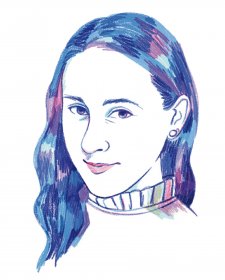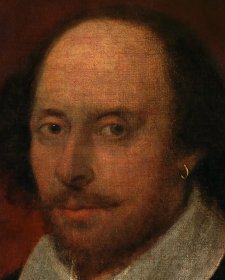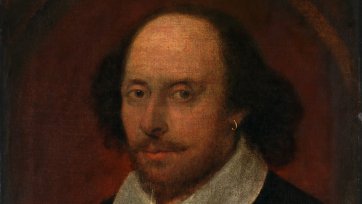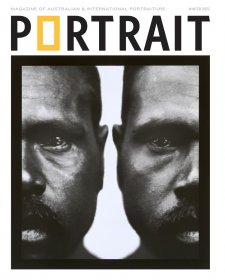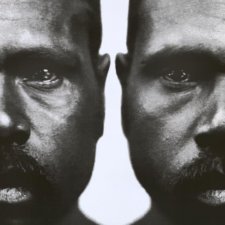Within a light-filled atrium a group of dancers stand close to one another.
Each body forms a posture; a torso inflates, hands find a particular gesture, faces are presented at a certain angle. These postures begin to shift and change, slowly at first but gaining momentum until bodies begin to propel through the space. Sometimes they interact with one another, at other times they drift apart finding a place to settle. No matter the pitch or complexity of each dancer’s movement, there is a repeated turning inward in order to project an essence outward. A moment of introspection can be captured, however fleeting, by those ready to observe.
Performed at the National Portrait Gallery, these moving portraits formed part of a unique cross-generational, cross-regional contemporary dance work: Connecting Stories. Inspired by the Shakespeare to Winehouse exhibition, and developed by Canberra dance companies QL2 Dance and Australian Dance Party together with Newcastle’s Catapult Dance, Connecting Stories provided audiences with an opportunity to experience and contrast the way different artists create portraits and consider how applying themes to a collection of works can frame our response to them.
Through two interconnected performance pieces, dancers of different ages and stages of their creative development came together to reflect on the nature of portraiture across time, space and form. In collaboration, the performers expressed their experience of viewing portraits of figures who have shaped our world throughout history and the ways artists and artistic practice have evolved to capture their essence. Connecting Stories: Innovations, made by professional dancers from Australian Dance Party and Catapult Dance, was performed at the Portrait Gallery in April 2022, while Connecting Stories: Generations, made by a larger ensemble of youth and professional practitioners from each of the three companies, took place in June. The collaborative process of developing Connecting Stories allowed the dance artists to apply their individual experience of creating and shaping their own image through different mediums in conversation with one another.
As a whole, Connecting Stories builds on YGEN to IGEN, a project first initiated by Australian Dance Party and QL2 Dance in 2020 to encourage an intergenerational exchange between dancers ranging from as young as eight years old through to those maintaining a professional practice. The creative values of this project, those of reflecting upon and nurturing a shared language across time, form a natural alignment with Shakespeare to Winehouse. In this exhibition the iconic portraits from the National Portrait Gallery in London were grouped according to six trans-historical themes: fame, identity, self, love and loss, innovation and power. In Shakespeare to Winehouse these themes may or may not align with the artist’s intent or how the subject perhaps perceived themselves, however in Connecting Stories they have been grappled with in real time, offering dance as a dynamic, impermanent portrait shaped by both the maker and viewer.
As well as drawing inspiration from each of these six themes individually, Connecting Stories also considers how grouping portraits this way, as opposed to a more traditional chronological, linear narrative, encourages us as viewers to assign them the same level of value along a trajectory of old to new. Artistic Director of QL2 Dance Ruth Osborne explained how integral that valuation and collaboration of people at different stages of their artistic practice is to Connecting Stories. ‘There is so much artistic value in young people. Not how much potential they may have for the future, but as they are now.’
For Connecting Stories: Innovations, performers reflected upon how ‘innovation can be amazing but it can also create more complexity and distance,’ explained Alison Plevey, Director of Australian Dance Party. ‘It can lead us to move away from people and what is human.’ This consideration in reference to particular portraits, including those of Kate Moss, Charles Darwin, T.S. Elliot, Greta Garbo and Gluck, resulted in a movement score ranging from a more angular and disjointed positioning of the body in space through to a lighter, more undulating expression that lent itself to interaction with others.
In Connecting Stories dancers explored a manipulation of the self as well as of others, creating moments through movement where an individual might either blend in or stand apart by choice or as a result of perceived pressure. Young people are perhaps more used to capturing their own portraits, documenting themselves and controlling their image and identity. In this more democratised context, portraiture has become part of the everyday, ephemeral, almost disposable – qualities that translate to live performance and dance.
One portrait within Shakespeare to Winehouse, that of architect Zaha Hadid created by artist Michael Craig-Martin, comes closest to mirroring this sense of ephemerality. A live LCD monitor hangs on the wall as though a painting, showing a line drawing of Hadid. The intense colours of the portrait are controlled by computer software and change over time. There are so many colour options and combinations that the portrait will never appear the same way twice, just as the many variables that inform a live performance ensure that while the skeleton of a work remains the same, the outcome can never truly be replicated, only captured and held fleetingly.


